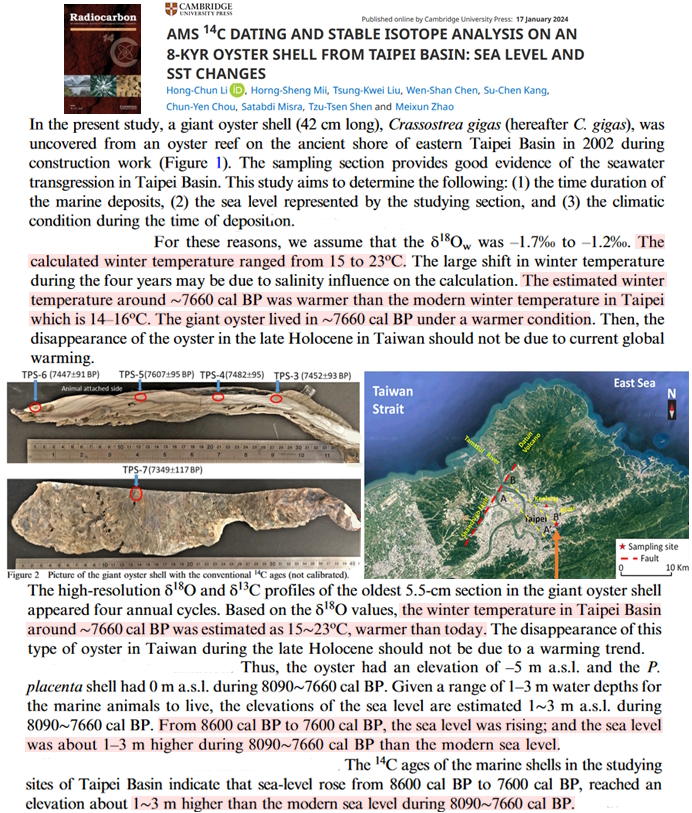Scientists continue to uncover evidence of a much warmer Early Holocene, when CO2 hovered near 260 ppm.
According to a new study, an ancient 42-centimeter long oyster shell has been found ~20 km inland from today’s Taipei Basin (Taiwan) coast.
Extensive isotope analyses (69 of them) of a 5 cm section of the shell reveal that the last time this area was regularly under sea level was about 8000 years ago, or during the Early Holocene.
Given that oysters reside in water depths of about 2 meters, sea levels can be calculated to have been about 1-3 meters higher than present at that time.
Also, while modern winter temperatures range from 14-16°C at this location, the analyses further revealed that the Early Holocene winter sea surface temperatures likely ranged from 15 to 23°C, which is ~4°C warmer than today on average, and up to 8°C warmer if winter temperatures reached 23°C.
“winter temperature in Taipei Basin ~7660 cal BP was estimated as 15-23°C, warmer than today [14-16°C]”






Reminder of an article from 2007: North Pole has now been ice-free for 12 years!
https://www-welt-de.translate.goog/wissenschaft/article1456952/Nordpol-bereits-in-fuenf-Jahren-eisfrei.html?_x_tr_sl=de&_x_tr_tl=en&_x_tr_hl=en